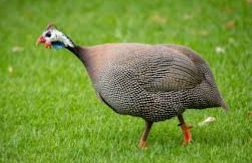Diversification is one of the major strategies to deal with the impact of climate change in communal areas. This can be crop diversification involving small grains or diversification of agricultural practices and having multiple sources of livelihood.
Generally, communal smallholder farmers have the capacity to keep indigenous free range chicken or guinea fowls for commercial purposes. Demand for white meat, particularly indigenous chicken has surged in recent years, hence market is not ideally a major problem. In planned resettlement areas, villagers have the capacity to keep up to 1000 birds at a time because they have a big residential area.
However, a possible alternative particularly for eggs is the guinea fowl. The bird resembles local chicken but naturally lives in the forest though it can be easily tamed. Its meat is sweeter than chicken meat, and it lays a considerable number of eggs compared to chicken.
To keep the guinea fowl at home, first build a house for them separate from the other chicken house. Fence around the house with chain link or chicken wire. In the fenced area plant a low growing bush for shade and to keep them away for mating as cocks do not mate while others are seeing.
Put a little cotton wool in their ears. Guinea fowls have a strong sense of hearing and can hear others calling 5 km a way. They will try to run a way and in the process can seriously get hurt. Feed your Guinea fowls the same feed you use to feed your chicken. Give them clean drinking water always.
The farmer can collect eggs and give to indigenous chicken for hatching, take the eggs to incubation machines or leave them with the guinea fowl. However, guinea fowl hens can lay up to 70 eggs before wanting to sit on them. This can make some of the eggs to get spoilt and lead to much loss. If hatching is done by the guinea fowls themselves, remove the young ones from their mothers and give to your chicken hen or keep them in an enclosed room. The keets do not know how to take care of themselves, neither do the hens know how to take care of their young ones.
Feeds are not really a problem, famers can produce their own home made mixed feeds or feed them with small grains. Farmers can sell to local business centres or liaise with restaurants for bulk supplies. Always comply with the veterinary rules and regulations for raising and selling the birds.
[ssba-buttons]